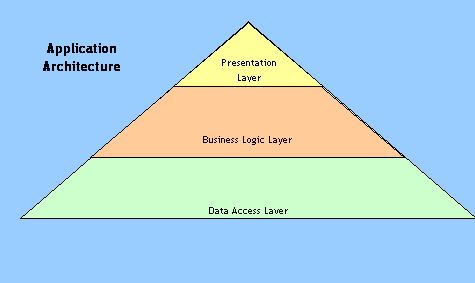
Application Architecture Concepts
Systems Analysis and Design Tutorial
An application system consists of three logical layers.
The presentation layer is what a system user sees or interacts with. It can consist of visual objects such as screens, web pages or reports or non-visual objects such as an interactive voice response interface.
When most people think of application systems, they think mainly of the presentation layer. Unfortunately, this layer represents a small portion of the effort involved in building application systems.
The business logic layer, on the other hand, implements and enforces the business rules via programming logic (computer instructions).
This business logic layer might on the surface appear to be very straight forward, however, that is rarely so.

The data access layer consists of the definitions of database tables and columns and the computer logic that is needed to navigate the database.
The layer in the application architecture enforces rules regarding the storage and access of information. For example: All date fields must be valid dates. All numeric fields must never contain alphanumeric characters.
This diagram on this page is a "logical" representation of an application system. When a system is implemented, application system components can be physically deployed on different computer systems.
For example, the presentation of the web page you are looking at is being handled by your computer or mobile device. The logic required to consolidate and communicate the visual objects that it needs is occurring on a web server located in Virginia USA.